
Fishing nets, coffee grounds, PET bottles
Materials made from marine pollution
ECONYL® nylon is made from fishing nets and other nylon waste. Abandoned fishing nets that are floating freely in our seas are turned into high quality clothing. Now that’s some positive news for the planet!
The WWF considers the issue of plastic in our oceans to be one of the most pressing environmental problems of our times. Plastic garbage pollutes our waters, releases toxins into the environment and threatens marine plants and animals. Ghost nets are doing a great deal of harm in the world’s oceans and dolphins and whales can get entangled in them.
From fish catcher to eye catcher
Aquafil, our suppliers for ECONYL® polyamide yarn, is collecting nets and other nylon waste from landfills and oceans and recycle them into new, high quality materials.
The preparation of the fishing nets – including cleaning, chemical depolymerization and repolymerization processes – takes place in Europe. Thanks to the ECONYL® Regeneration System, New polyamide yarn is created from pollution – with the same chemical qualities and the same functionality as polyamide made from petroleum.
Pollution is cleared while crude oil, energy and emissions are conserved during the manufacturing process of a new product. Fact and figures, photos and videos are available at www.econyl.com
From bottles to bags: PET recycling
Another source of recycling material at VAUDE is used PET bottles. These are collected, cleaned, ground and processed to form granulate that is then melted and spun into yarn.
The benefit of this kind of recycling is twofold – of the 50 million tons of plastics produced in Europe each year, almost half of this is for packaging that ends up in landfill within a year. PET bottles and other packaging make up a large proportion of this. From an ecological standpoint, it makes absolute sense to reduce these mountains of plastic.
The process of making high-quality polyester like this requires 50 % less energy and produces approx. 50 % less CO₂ emissions. Absolutely no fossil fuel petroleum is required.
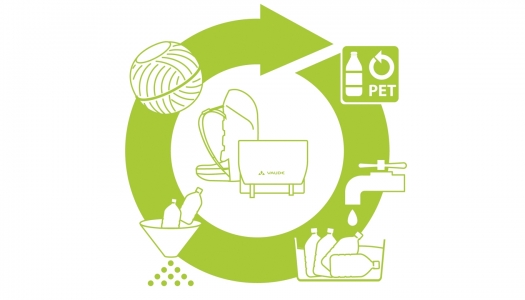
|
The Recycling Cycle
Collect, clean, granulate and spin: the recycling cycle of PET bottles. Water-resistant products such as bags and backpacks are made using the fibers that result from this cycle. |
Green Shape PET Recycling - Movie:
PrimaLoft® Silver Insulation Natural Blend
Recycling materials can also be combined well with natural fibers. We are using an innovative PrimaLoft® insulation with "plant-based down":
The large fruits of the kapok tree contain fluffy, light and silky fibers that look like cotton wool. Kapok fiber is considered one of the world’s lightest natural fibers. Kapok usually grows wild in tropical regions such as Indonesia and does not need fertilizers or irrigation.
A kapok tree produces about 20 kilograms of fiber per year in its fruits. The fiber is collected by the local population and sold to buyers who bring it to the textile industry. Since such a valuable income is generated for the local people, Kapok trees are usually highly valued and therefore also well protected.
The biobased fiber offers excellent heat storage and moisture management without the need for additional chemical treatment.
PrimaLoft® Silver Insulation Natural Blend consists of 30 % Kapok natural fiber and 70 % ultra-fine polyester fiber, two thirds of which are produced from recycled PET bottles. It keeps you warm, dries quickly, is easy to care for, durable and protects the planet’s limited resources.
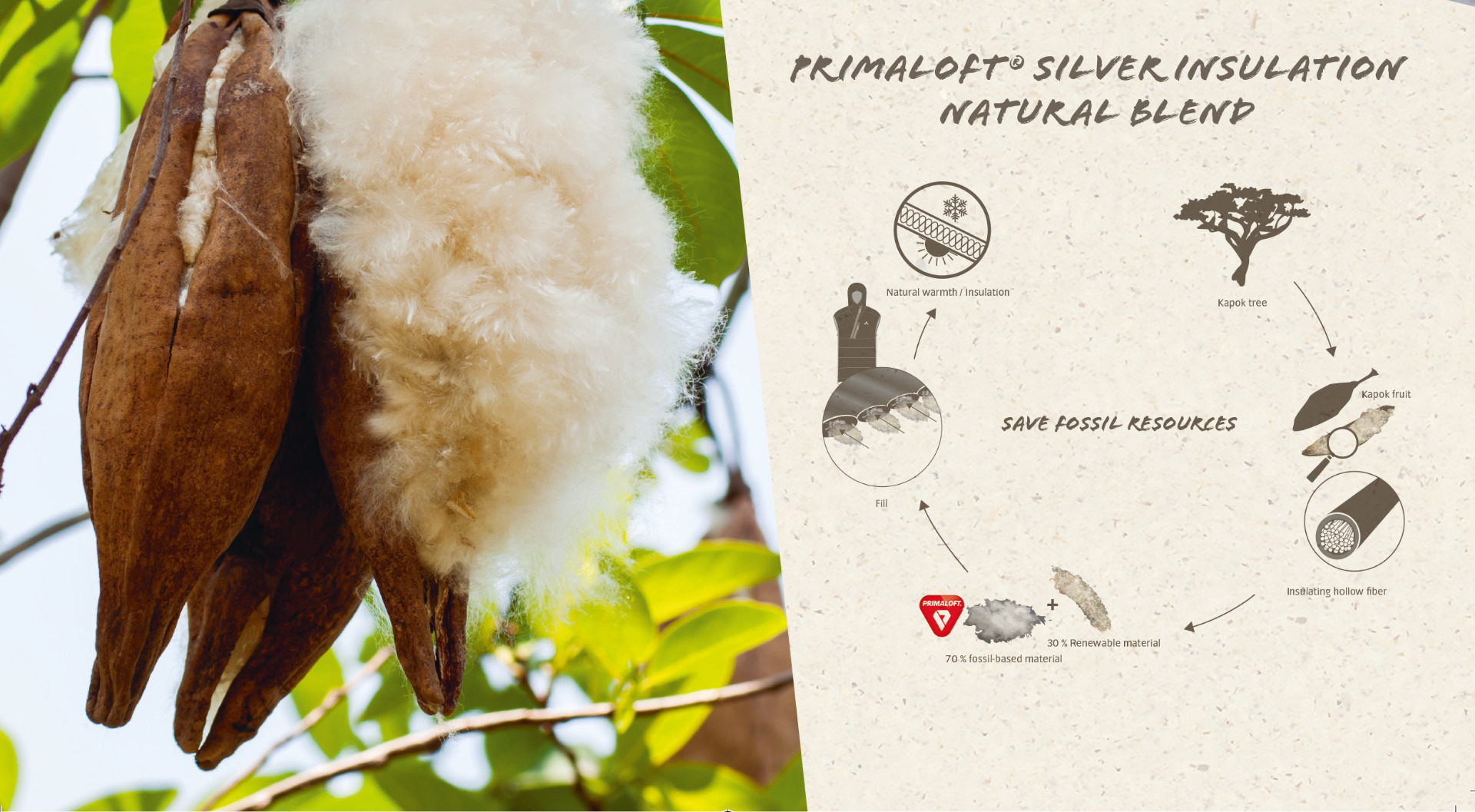
Fully functional. Duly delightful.
For some of our highly functional products we include recycled polyester. These are material surpluses from polyester production which - instead of the usual waste - are not disposed of but collected and returned to production. This conserves resources and still provides our products with full functionality.
The process involves recovering the distinct polymers that make up the synthetic fiber and reassembling them.
This produces a granulate that can be spun into yarn and woven to make fabrics. This reduces landfill waste, as used textiles are recycled rather than disposed of. There is no additional need for petroleum in the reclamation of these polymers.
Our coffee to go
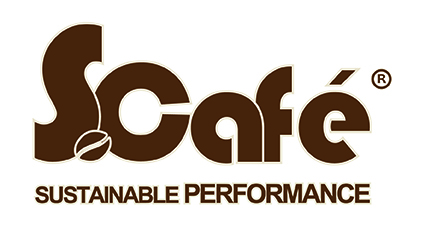
One of our favorite materials is S.Café® recycled polyester. This material involves a spin mass made from recycled, melted polyester granulate that is mixed with used coffee grounds.
The material is partially biobased, dries fast, provides UV protection and has the bonus effect of being antimicrobial, which prevents odors and allows us to eliminate the use of chemical anti-odor finishes. This is a great thing and it is why we are using this material in T-shirts, jackets, fleece products and chamois for bike shorts.
Recycled Down
It’s not just synthetic materials that can be recycled. Starting with the Summer Collection 2019 we will also use 100 % recycled down as insulating fill for our sleeping bags.
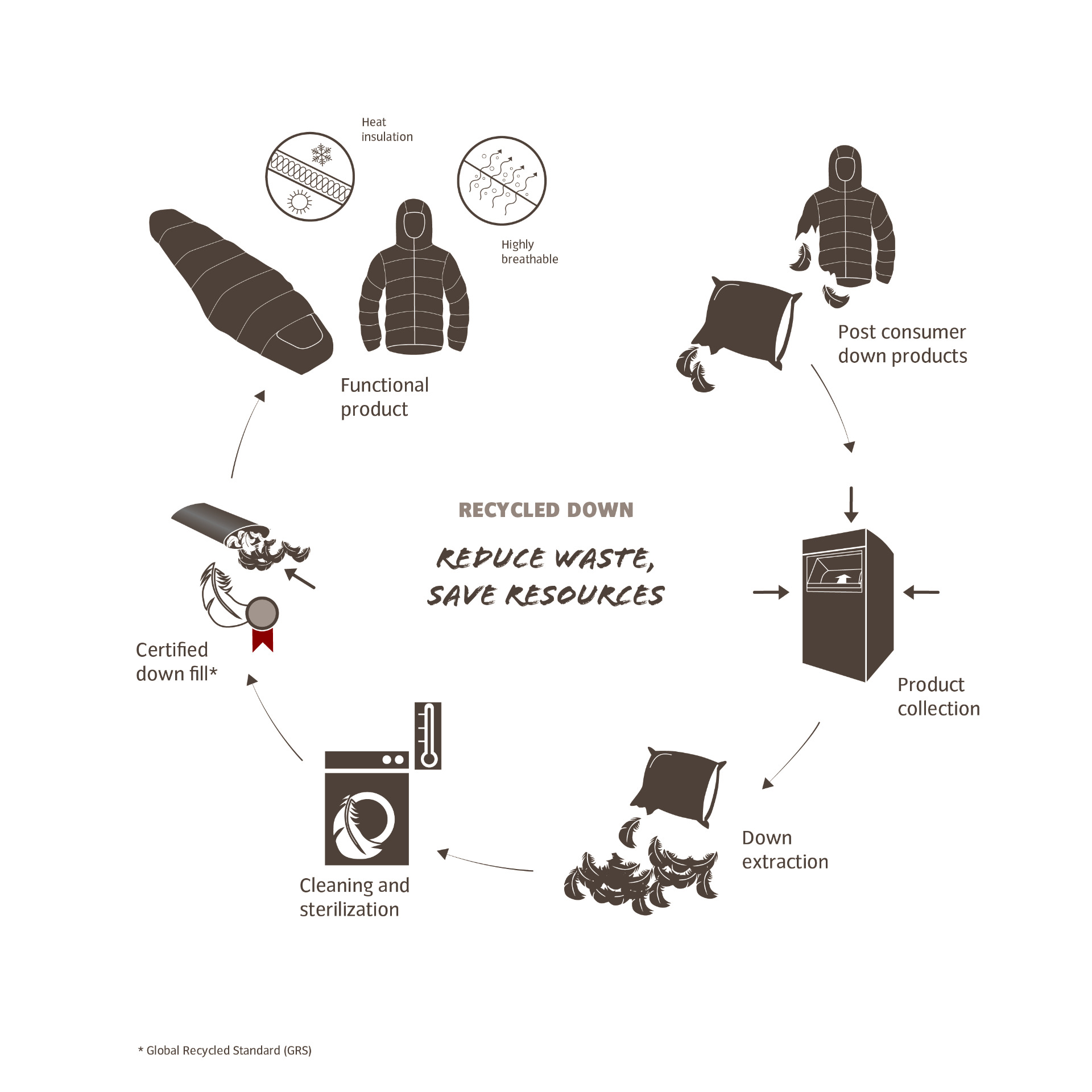
Recycled down comes from sources such as duck and goose down from bedding and clothing. Rather than being thrown out, textile recyclers collect it and reprocess according to the Global Recycling Standard Guidelines.
The recycling economy enables us to extend the use of valuable natural products. The used down is cleaned in an energy-efficient process and sterilized at high temperatures. This preserves the material’s excellent insulation properties and we can use it make new products that are highly breathable and feature natural thermal regulation at the lowest possible weight.
Hemp - first-class fabric with a sustainable impact.
Another excellent recycled natural material is hemp. In our Lignum Packs ’n Bags series we use recycled hemp fiber. For this purpose, the fiber remnants from the production of hemp clothing are mechanically crushed, reprocessed and spun into new yarn.
Hemp has a long tradition - according to legend, the first Levi Strauss jeans were made of a robust hemp fabric.
The frugal and robust useful hemp plant is very resistant by nature and grows quickly. Hemp grown for fiber is heavily cultivated in China, but increasingly in Europe as well. Hemp needs little water for cultivation, no fertilizers and no pesticides. This makes it an environmentally friendly, renewable raw material.
After the hemp plant has been cut, the stems are left in the field to ripen and dry. The bast fibers are then removed from the stem in a labor-intensive mechanical process so that they can be spun into a yarn. This is finally processed into hard-wearing fabrics that are made into high-quality and durable products.
Increasing percentage of the Collection
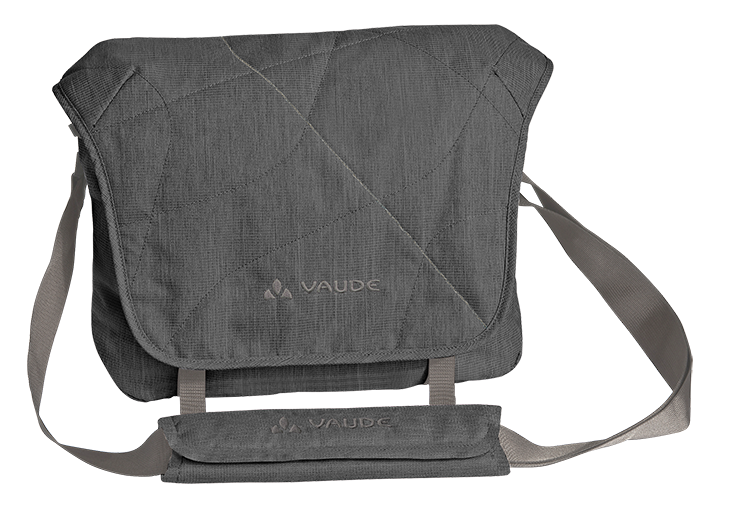
VAUDE wants to continue to promote the use of recycled materials.
The criteria for VAUDE’s Green Shape products with the Recycled label is 30 % minimum for footwear up to 90 % minimum for apparel.
These standards are very high. For VAUDE products that are made with a lower percentage of recycled materials and therefore don’t meet the Green Shape criteria, we introduced a new label in the Summer Collection 2016 that identifies products made from a minimum of 30 % recycled materials.
We want to enable our customers to better identify recycled products so that they can make informed purchasing decisions.
Percent of products made from recycled materials
Create your own infographicsNotes on this graphic:
- “Total” refers to all backpacks, bags and bike bags from the product areas Mountain Sports, Bike Sports and Packs ’n Bags.
- The following applies to all products: the percentage of all integrated primary materials made from recycled materials is at least 30 %. When the percentage of integrated recycled materials is significantly higher, the products have the VAUDE Green Shape label. This representation differentiates based on the percentage of recycled materials, but not whether or not the product has Green Shape status. Green Shape concerns very different sustainability criteria. Read more here.
Certified Recycled Materials
All recycled materials used by VAUDE meet the following standards:
| GRI: | 301-2 |




